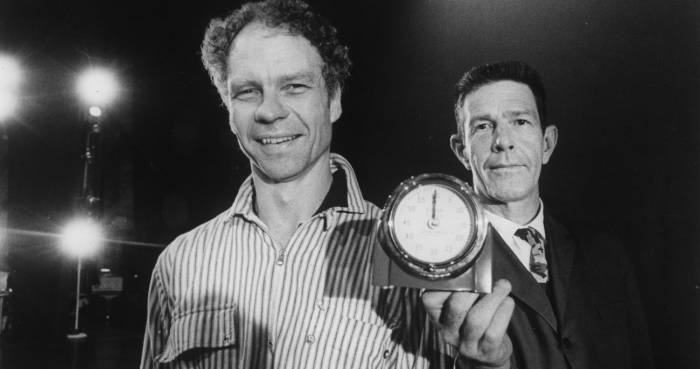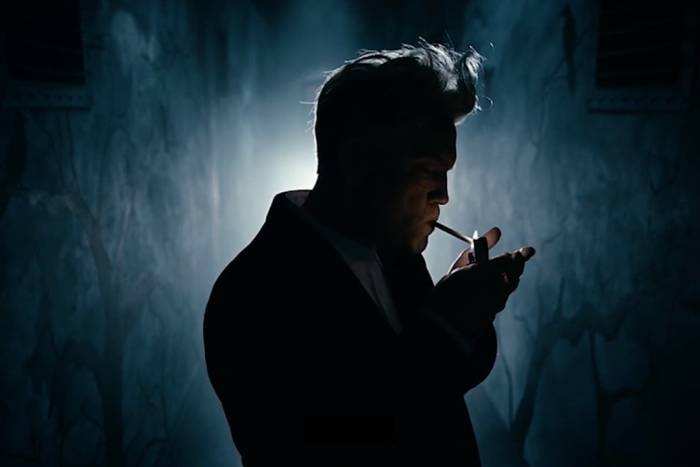How to Write a Horror Story in Five Simple Steps
H.P. Lovecraft recommends five steps for writing a horror, or “weird fiction”, story.
In addition to his ample literary oeuvre —which encompasses short stories, novels, poetry, epistolary literature and essays— Howard Phillips Lovecraft also wrote numerous texts about the act of writing. In one of his essays on horror literature, the writer established five points to write a short story of said genre.
Lovecraft’s figure and his importance in the universe of the 20th century horror story (alongside, undoubtedly, Edgar Allan Poe) are beyond well known. As a great connoisseur of horror fiction, Lovecraft elaborated on a style known as “weird fiction”, previously established by Irish gothic writer Sheridan Le Fanu. For this enigmatic American, more than “secret murder, bloody bones, or a sheeted form clanking chains,” true weird fiction must have “a certain atmosphere of breathless and unexplainable dread of outer, unknown forces.” In this sense, his axiom is close to what Edgar Allan Poe did with language to generate horror: suggest instead show; “intuition is irresistible,” he said, “the inexplicable is irresistible”.
Among some of his essays on writing and literature we find “Literary Composition” (1920), “Supernatural Horror in Literature”, and “Notes on Writing Weird Fiction” (1927), which contains the five points for writing a horror story and defines five classes of weird fiction.
Below, the five points that, according to H. P. Lovecraft, we must follow in order to write a horror story:
- Prepare a synopsis or scenario of events in the order of their absolute occurrence—not the order of their narrations.
- Prepare a neatly typed copy—not hesitating to add final revisory touches where they seem in order.
- Prepare a second synopsis or scenario of events—this one in order of narration (not actual occurrence), with ample fullness and detail, and with notes as to changing perspective, stresses, and climax.
- Write out the story—rapidly, fluently, and not too critically—following the second or narrative-order synopsis. Change incidents and plot whenever the developing process seems to suggest such change, never being bound by any previous design.
- Revise the entire text, paying attention to vocabulary, syntax, rhythm of prose, proportioning of parts, niceties of tone, grace and convincingness of transitions.
Noticeably, in his list of advice, Lovecraft does not approach the content of the story in terms of characters, structures or events; it would seem that the list constitutes a type of shell that must be completed with the author’s imagination. Additionally, as Roald Dahl did at some point said, it would seem to insinuate that “the best ghost stories do not have any ghosts in them.”
By emphasizing in the rhythm of prose, the grace and finesse of the tone, Lovecraft evinces that the control over form can accomplish any result that one sets out to accomplish. Hence his list of steps is advantageous for the writing of any genre. But, appealing to the fact that this series of advice is courtesy of such an intriguing and dark being, it might be fitting to invoke (suggest) a few ghost in the process.
Related Articles
Pictorial spiritism (a woman's drawings guided by a spirit)
There are numerous examples in the history of self-taught artists which suggest an interrogation of that which we take for granted within the universe of art. Such was the case with figures like
Astounding fairytale illustrations from Japan
Fairy tales tribal stories— are more than childish tales. Such fictions, the characters of which inhabit our earliest memories, aren’t just literary works with an aesthetic and pleasant purpose. They
A cinematic poem and an ode to water: its rhythms, shapes and textures
Here lies One Whose Name was writ in Water. - John Keats Without water the equation of life, at least life as we know it, would be impossible. A growing hypothesis holds that water, including the
Watch beauty unfold through science in this "ode to a flower" (video)
The study of the microscopic is one of the richest, most aesthetic methods of understanding the world. Lucky is the scientist who, upon seeing something beautiful, is able to see all of the tiny
To invent those we love or to see them as they are? Love in two of the movies' favorite scenes
So much has been said already, of “love” that it’s difficult to add anything, much less something new. It’s possible, though, perhaps because even if you try to pass through the sieve of all our
This app allows you to find and preserve ancient typographies
Most people, even those who are far removed from the world of design, are familiar with some type of typography and its ability to transform any text, help out dyslexics or stretch an eight page paper
The secrets of the mind-body connection
For decades medical research has recognized the existence of the placebo effect — in which the assumption that a medication will help produces actual physical improvements. In addition to this, a
The sea as infinite laboratory
Much of our thinking on the shape of the world and the universe derives from the way scientists and artists have approached these topics over time. Our fascination with the mysteries of the
Sharing and collaborating - natural movements of the creative being
We might sometimes think that artistic or creative activity is, in essence, individualistic. The Genesis of Judeo-Christian tradition portrays a God whose decision to create the world is as vehement
John Malkovich becomes David Lynch (and other characters)
John Malkovich and David Lynch are, respectively, the actor and film director who’ve implicitly or explicitly addressed the issues of identity and its porous barriers through numerous projects. Now










